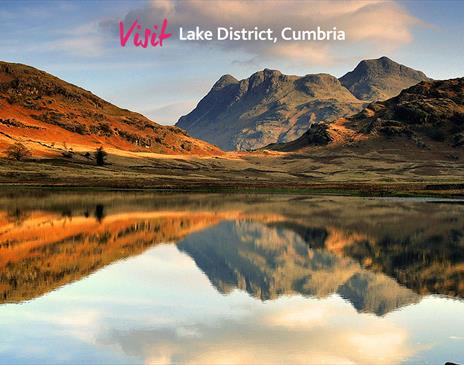- Accommodation
- What's On
- Things to Do
- Food and Drink
- Explore Cumbria
- Areas of Cumbria
- Towns & Villages
- Travel
- Year of the Coast
- Dark Sky Cumbria
- World Heritage Cumbria
- Access for all
- Historic Houses, Parks & Gardens
- Mountains and Fells
- Wainwrights
- The National Trust in the Lake District
- Lakes and Rivers
- Cumbrian Castles
- Cumbrian Churches
- Harbours & Marinas
- Tourist Information Centres
- Ideas and Inspiration
- Christmas & New Year
- Rainy day ideas
- Sunny day ideas
- Selfie Guide
- Suggested Itineraries
- Spa Breaks
- Romantic Breaks
- Family Holidays
- Dog Friendly Holidays
- Bespoke Holidays
- The Inn Collection Group in the Lake District
- Sustainable Stays
- Caring for the environment
- Live, Work and Study in The Lake District, Cumbria
- Weddings
- Conferences & Event Spaces
- Prizes & Guides
- Blog
- Plan your journey
- Special Offers
You are here: Home > Explore Cumbria > Barrow-in-Furness
Supported by

With the sea on three sides and the Lakes on the other, the bustling Victorian town of Barrow-in-Furness makes the most of its enviable location. There’s some great walking and cycling routes that start in the town centre, whose wide streets lined with impressive sandstone buildings are evidence of the town’s 19th century prosperity as one of the country’s major shipbuilding centres.
Barrow-in-Furness enjoys 60km of stunning coastline and takes in two estuaries. With impressive coastal views you just have to stop for a while to take in the sheer expanse of Morecambe Bay and the Duddon Estuary.
What to do
Where to start? You are spoilt for choice with attractions, indoor and out, in Barrow-in-Furness.
Learn about the fascinating history of the town’s industrial and maritime past at the Dock Museum, which is free to visit and has a great outdoor adventure playground. Families will also love the nearby Safari Zoo at Dalton-in-Furness. Home to over 1000 of the rarest and most endangered species, the zoo’s collection is housed in unique natural environments which enable you to get as close as physically possible to some amazing creatures.
Barrow has a wealth of heritage buildings including Piel Castle and an imposing Victorian town hall. But you can’t come to Barrow without paying a visit to the impressive remains of Furness Abbey, which are located on the outskirts of town in an area once known as the ‘Vale of Nightshade’. The abbey was completed in 1123 and passed to the Cistercians in 1147, becoming the second richest and most powerful abbey in England. It is now managed by English Heritage.
Stay a while longer and enjoy some retail therapy. Barrow’s indoor market (open Monday, Wednesday, Friday & Saturday) is the largest in Cumbria and recently featured on the Hairy Bikers Go North BBC2 series. The town centre is home to a surprising array of quirky independent retailers who offer a friendly welcome and helpful customer service.
The surprises just keep on coming! For all its industrial heritage in 2016 Barrow-in-Furness was rated the ‘Number 1 Borough in England’ for natural heritage assets by The Royal Society of Arts & Industry. For nature lovers, a visit to Walney is a must. And it’s not just birds to spot but an abundance of wildlife, including Grey (Atlantic) seals, thanks to its two nature reserves.
From Walney head along the north-western peninsula to Roanhead beach and sand dunes, alongside the Sandscale Haws Nature Reserve. A sun-trap on a bright day, families will love exploring the natural world and playing hide and seek among the dunes.
Culture & Heritage
Barrow has come a long way since it was first occupied by the Vikings (the Romans, oddly, just bypassed the place altogether). The Vikings’ legacy is in placenames like North Scale (from ‘skali' - Norse for summer dwelling), Biggar (from ‘bygg gar' meaning barley field) and Roa (red island). The name ‘Furness’ is derived from ‘Far Ness’ (or ‘distant headland’) – its remoteness being one of the main reasons why the monks chose to build an abbey here.
The establishment of Furness Abbey in 1127 had a major impact on the area. By the early 13th century, as mentioned earlier, the abbey was the second largest monastery in England. Piel Castle was also used by the monks as a warehouse to store grain and wool prior to shipment overseas.
For centuries Furness was part of Lancashire and being an isolated northern outpost it was left quietly undisturbed until the mid-19th century. The arrival of the Furness Railway in 1846 made it much easier to transport iron ore and slate out of the area. Within 40 years, Barrow went from being a small village on a remote headland to a large industrial town with railway, docks, iron/steelworks and a thriving shipyard.
Barrow’s growth was really down to the efforts of three men: local iron ore magnate Henry Schneider, Furness Railway Company general manager James Ramsden and Lord Cavendish, 7th Duke of Devonshire, who put up most of the money.
Ramsden had the notion of using Barrow's steel to build ships and with money invested by the railway company and the Duke of Devonshire, the Barrow Shipbuilding Company was formed in 1871. Two years later the company launched its first sailing vessel and started building ships for clients all over the world. Over 1000 vessels, from warships to oil tankers and passenger liners, have been built here since 1873.
In 1897 the shipyard and engineering works were taken over by Vickers who ran it for nearly a century. The Company developed the model estate of Vickerstown on Walney in the early 1900s to provide homes for shipyard workers, complete with shops, churches, a farm and a park. At around the same time, a bridge was opened to link Walney with Barrow (re-named Jubilee Bridge in 1935).
Today, the steel industry has disappeared but shipbuilding is still at the economic core of the town with BAE Systems continuing to build submarines for the Royal Navy in the huge Devonshire Dock Hall that dominates the southern part of the town.
Surrounding Areas
Askam-in-Furness - Askam and Ireleth are villages just outside of Barrow.
Dalton-in-Furness - In medieval times Dalton was the administrative centre of Furness, with strong links to nearby Furness Abbey.
Walney Island - The Furness Peninsula is capped by Walney Island - a curving ‘whale tail' that has protected Barrow from the sea for centuries.
Did you know?
 Piel CastleThis 14th century stronghold on Piel Island, built by Furness Abbey as a warehouse to store grain and wool, was also the centre of a lucrative trade in smuggling.
Piel CastleThis 14th century stronghold on Piel Island, built by Furness Abbey as a warehouse to store grain and wool, was also the centre of a lucrative trade in smuggling. Furness AbbeyFounded in 1127 Furness Abbey was one of the wealthiest Cistercian abbeys in England until it was ‘dissolved' by Henry VIII in 1537.
Furness AbbeyFounded in 1127 Furness Abbey was one of the wealthiest Cistercian abbeys in England until it was ‘dissolved' by Henry VIII in 1537. Dalton CastleThe castle, built by Furness Abbey in the 14th-century as a courthouse and prison, was also used as a refuge for Dalton townsfolk and livestock during Scottish raids.
Dalton CastleThe castle, built by Furness Abbey in the 14th-century as a courthouse and prison, was also used as a refuge for Dalton townsfolk and livestock during Scottish raids. Leading LightsThe tall structure on the beach at Rampside is one of 13 ‘leading lights’ that were erected between 1850 and 1870 to guide ships through the Walney Channel.
Leading LightsThe tall structure on the beach at Rampside is one of 13 ‘leading lights’ that were erected between 1850 and 1870 to guide ships through the Walney Channel. The Barrow BlitzDuring World War II, Barrow was targeted by the Germans because of its ability to build warships and submarines.
The Barrow BlitzDuring World War II, Barrow was targeted by the Germans because of its ability to build warships and submarines. Housewife, 49Victoria Wood’s compelling drama ‘Housewife, 49’ charts the daily life of a Barrow housewife and mother through her diaries, written during the Second World War.
Housewife, 49Victoria Wood’s compelling drama ‘Housewife, 49’ charts the daily life of a Barrow housewife and mother through her diaries, written during the Second World War.
Highlights
You will find a diverse range of events and activities at The Forum, as we again aim to bring…
BarrowFull is an arts organisation led by Barrow-based partners with the aim of increasing…
Claire Henry presenter We're inviting you to come along and join the Musical Professors in their…
Here Comes The Girls - 3 of the top female tributes in the UK for one night and with a pie and pea…
Express Bar & Lounge serving International cuisine, ranging from pizza, pasta, burgers, sandwiches…
Following the jolly success of last year, we're over the moon to invite you all to Another Local…
South Walney isolated position on the southern tip of Walney Island makes it a special place for…
Now a ruin, Furness Abbey was once the second most powerful Cistercian monastery in Britain, after…
Built in a historic nineteenth century dock, the museum is home to a wealth of objects on the…
We are pleased to announce that our new Shipyard Town gallery is fully open. We are honoured to…
Bright, modern hotel in the heart of Barrow in Furness with free WI-FI and breakfast included..
Beethoven Violin Concerto Beethoven Symphony No.3, 'Eroica' Domingo Hindoyan conductor Veronika…
A Premium Hotel & Wedding Venue based in Barrow in Furness in Cumbria. Set in 14 acres of private…
Programme to feature works by De Falla, Handel and Vaughan Williams. Claire Henry…
We are delighted to announce in light of the main auditorium being closed that we will be turning…
Have this special coastal nature reserve all to yourselves for an after-hours adventure! Track…
Domingo Hindoyan conductor Members of the Royal Liverpool Philharmonic Orchestra Ever wondered…

- 1The Forum
- 2BarrowFull
- 3Under-5s Concert: The Musical Professor
- 4Roo Stars Christmas Extravaganza
- 5Express Bar & Lounge at Holiday Inn Express Barrow - South Lakes
- 6Another Local Christmas Market
- 7South Walney Nature Reserve
- 8Furness Abbey
- 9The Dock Museum
- 10Shipyard Town Gallery
- 11Holiday Inn Express Barrow - South Lakes
- 12Beethoven in Barrow
- 13Abbey House Hotel & Gardens
- 14Dementia-Friendly Concert: By The Fireside
- 15Santa Express!
- 16Wildlife Tracking After Hours at South Walney Nature Reserve with Cumbria Wildlife Trust
- 17Conducting Showdown!

Watching the sun go down over Morecambe Bay is the stuff memories are made of
- Accommodation
- Things to Do
- What's On
- Food & Drink
-
Towns & Villages
Number of results: 23
, currently showing 21 to 23.
Address
Abbey Road, Barrow-in-Furness, Cumbria, LA13 9BDTelephone
01229 876564Barrow-in-Furness
Set in 45 acres, Barrow's award-winning park provides the perfect place to stroll on sunny afternoons. Barrow Park..... always something going on, always something growing on!
Address
West Shore Park, Walney, BARROW-IN-FURNESS, Cumbria, LA14 3YTBARROW-IN-FURNESS
West Shore car park provides free parking, an ideal place to do lovely coastal walks and the North walney nature reserve is well worth a visit too.
You may also like
Receive all the latest news, special offers and information from the Lake District, Cumbria
Cumbria Tourism, Windermere Road, Staveley, Kendal, Cumbria, LA8 9PL



 to add an item to your Itinerary basket.
to add an item to your Itinerary basket.










